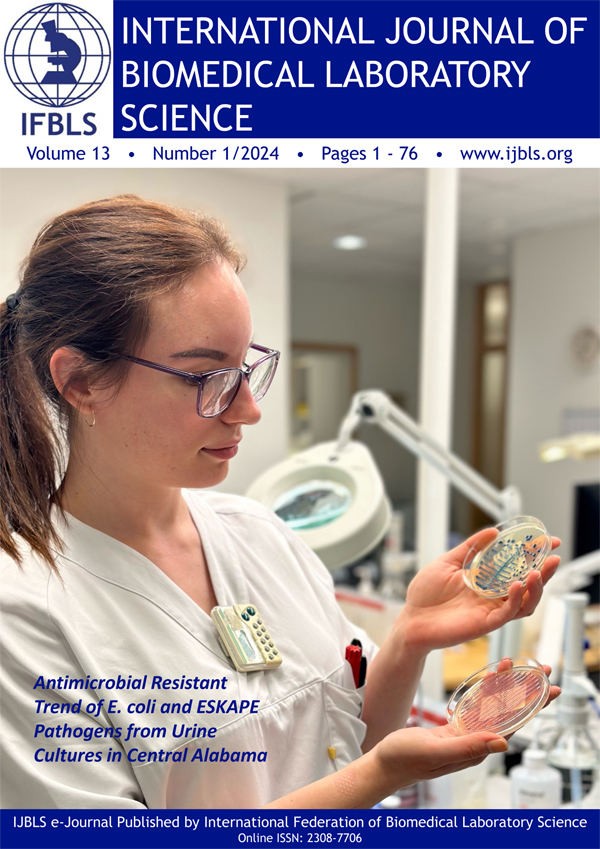Research article: Antimicrobial Resistant Trend of E. coli and ESKAPE Pathogens from Urine Cultures in Central Alabama
Tracy Camara, Li Qian, Angelique Korbecki, Ngoc Le, Ann Chambers
Abstract
The purpose of this research is to identify the antimicrobial resistant pattern to provide scientific evidence for improving antimicrobial therapy for Escherichia coli and ESKAPE organisms in urine samples recovered from Central Alabama in 2020. A total of 3498 organisms were identified by matrix assisted laser desorption ionization time of flight mass spectrometry (MALDI-TOF MS) and the sensitivities were performed on MicroScan WalkAway 96 by using the Clinical Laboratory Science Institute (CLSI) microdilution method. The identified organisms were from clean-catch midstream, foley catheter, and straight catheterized urine. For the 69.4% of E. coli isolates, ampicillin/sulbactam had the lowest sensitivity at 54%. Among the 920 ESKAPE pathogens, Enterococcus faecium was most resistant to ampicillin with sensitivity at 8%. Staphylococcus aureus was most resistant to penicillin with sensitivity at 7%; Klebsiella pneumoniae was most resistant to nitrofurantoin at 35%; Acinetobacter baumannii lacked samples for statistical analysis; Pseudomonas aeruginosa was most resistant to levofloxacin with sensitivity at 68%; Enterobacter species was most resistant to ertapenem at 83%. Overall, the resistant patterns of E. coli and the ESKAPE organisms isolated in the hospital system were comparable to those reported globally and nationally; however, because these organisms are becoming resistant faster than new antibiotics are being introduced to the market, diligence must take place to conserve and appropriately use current antibiotics in patient treatments.
Keywords: Antimicrobial resistance, urine cultures, E. coli, ESKAPE pathogens
Int. J. Bio. Lab. Sci 2024(13)1:21-31 【PDF】


